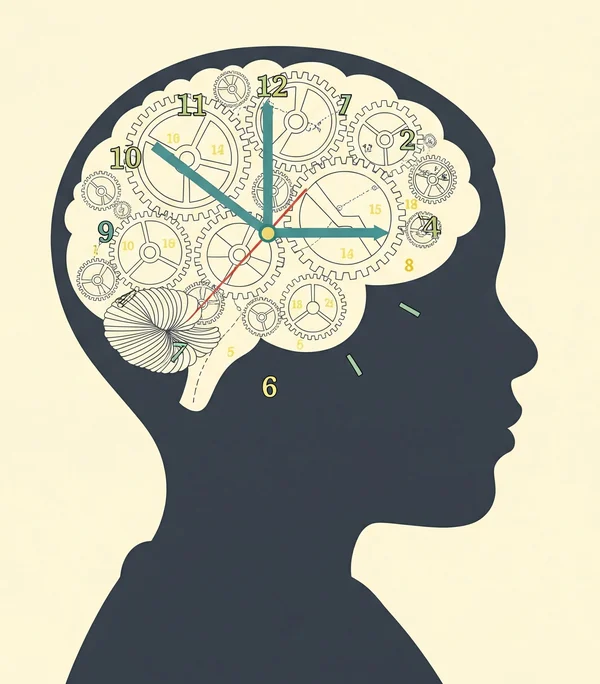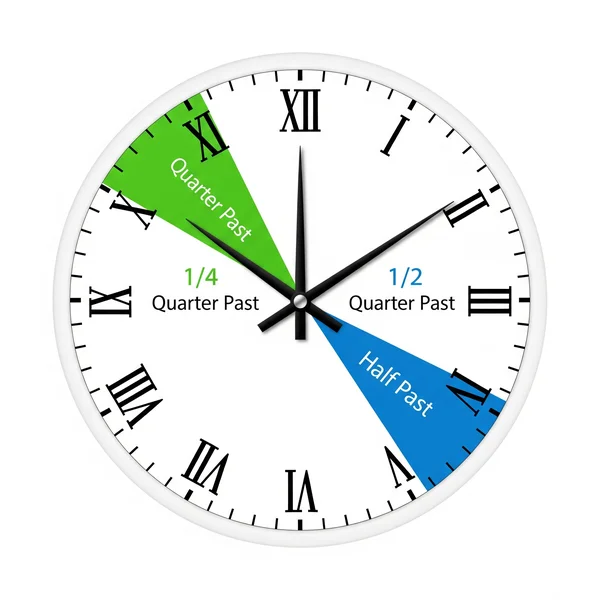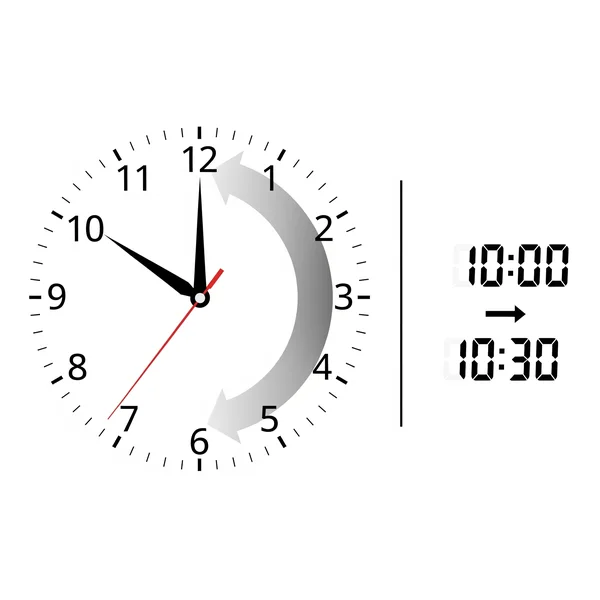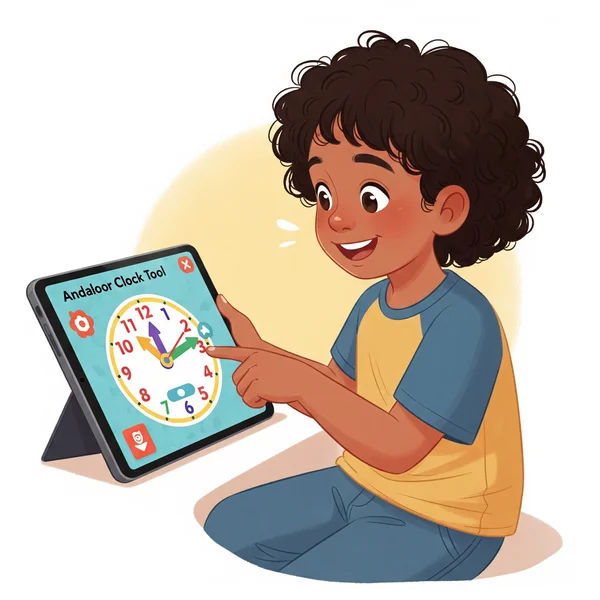Are Analog Clocks Obsolete? Why Learning Them Matters
In a world dominated by smartphones and digital displays, it's a fair question to ask: Are analog clocks obsolete? With digital time readily available at a glance, many wonder if teaching children to read a traditional clock face is still a necessary skill. Why learn analog clock in digital age? This article argues that despite technological advancements, learning to read an analog clock offers profound and enduring benefits of analog clocks, especially for a child's cognitive development analog clock and understanding of time concepts. Modern interactive learning tools also make this "traditional" skill engaging and accessible.
The "Analog Clocks Are Obsolete" Myth: Addressing Modern Doubts
It's easy to see why some might consider the analog clock a relic of the past. Digital readouts are everywhere, seemingly making the skill of interpreting hands on a circular dial unnecessary. Are analog clocks becoming obsolete in practical, everyday use for some? Perhaps in certain contexts.
Why Some Believe Analog Clocks Are Outdated
The convenience of digital time is undeniable. It's instant, requires no interpretation, and is integrated into nearly every device we own. This leads to the perception that the effort to learn an analog clock might outweigh its practical utility in modern life.
The Counterargument: Unique Value in a Digital Age
However, dismissing the analog clock as obsolete overlooks its unique contributions to learning and cognitive skill-building. The analog clock importance lies not just in telling time, but in how it teaches time. The visual and mechanical nature of an analog clock face provides learning opportunities that digital displays simply cannot replicate.
Cognitive Benefits: How Analog Clocks Boost Your Child's Brain
The real magic of learning an analog clock lies in the often-unseen benefits of analog clocks for a child's developing mind. These go far beyond simply knowing the time. Is an analog clock better for the brain? In many developmental aspects, the answer is yes.

Developing Spatial Reasoning and Visual Skills
Reading an analog clock requires understanding angles, fractions of a circle, and the spatial relationship between the hour and minute hands. This constant visual processing helps develop strong spatial reasoning skills, which are crucial for subjects like math and science, and even everyday tasks like navigating.
Reinforcing Mathematical Concepts (Counting, Fractions)
The analog clock is a natural tool for teaching basic math skills from clocks. Children learn to count by fives (for the minutes), understand concepts like "half past" (1/2) and "quarter past" (1/4), and grasp the idea of 60 minutes in an hour. This practical application makes abstract math concepts more tangible.

Grasping Time as a Continuous Flow
Unlike a digital display that simply flips numbers, the sweeping hands of an analog clock visually represent time as a continuous, flowing entity. Children can see time moving, helping them develop a more intuitive understanding of duration and the passage of time – a key element of time concepts.
Enhancing Estimation and Future Planning Abilities
Being able to glance at an analog clock and quickly estimate how much time is left before an event, or how long an activity might take, is a valuable skill. This visual estimation is often more intuitive with an analog display than with discrete digital numbers, aiding in problem-solving and planning.
Analog Clocks and a Deeper Sense of Time Passage
The educational value of an analog clock extends to how it helps internalize the concept of time's passage.
Visualizing Duration vs. Reading Numbers
Seeing the minute hand move a significant portion around the dial for an activity like "30 minutes of playtime" provides a much stronger visual representation of that duration than seeing digital numbers change from :00 to :30. This visualization is a key aspect of the analog clock relevance.

The Importance of Seeing Time Move
This active, visual movement helps children develop an internal "feel" for different lengths of time. This deeper understanding is one of the significant benefits of analog clocks that contributes to better time management skills later in life.
Beyond the Classroom: Practical Reasons Kids Should Learn Analog Clocks
Even in our digital world, there are practical reasons why should kids learn analog clocks. Are analog clocks still taught? Yes, in many educational settings, precisely because of these ongoing benefits and real-world occurrences.
Encountering Analog Clocks in Daily Life
Analog clocks still feature in many public spaces, on watches, and in some official settings. Being able to read them ensures a child isn't caught off guard or dependent solely on digital devices. These telling time skills are universally useful.
Fostering Independence and Adaptability
The ability to read any type of clock fosters independence. It's about being adaptable and equipped with a full range of basic life skills, regardless of the technology immediately available.
A Foundational Skill for Overall Time Literacy
Learning to read an analog clock is part of a broader "time literacy." It contributes to a more comprehensive understanding of how we measure, discuss, and manage time, which is fundamental to organization and daily functioning. You can begin this journey with an easy-to-use online clock.
Making it Fun: How Interactive Tools Keep Analog Clock Learning Alive
Concerns about are analog clocks obsolete often stem from memories of tedious learning methods. However, modern approaches have changed that.
Engaging Learning with Digital Analog Clocks
Today, children can learn using dynamic, interactive analog clock tools. These platforms often combine the visual benefits of an analog display with helpful digital feedback, making the learning process far more engaging than static worksheets.

Using Features Like Movable Hands for Practice
The ability to freely move the hands, lock one hand while practicing with the other, or get instant digital confirmation, as offered by many online learning clocks, helps children experiment and understand the mechanics deeply. This hands-on approach solidifies telling time skills.
Ensuring the Skill Isn't Lost to "Difficult" Teaching
Interactive resources make learning the analog clock fun and intuitive, effectively countering the idea that it's an "obsolete" or overly difficult skill to teach or learn. The analog clock importance is maintained by making it accessible.
The Verdict: Analog Clocks Are Timeless Learning Tools
So, are analog clocks obsolete? The clear answer is no. While digital time is convenient, the unique benefits of analog clocks for cognitive development, mathematical understanding, and a deeper conceptualization of time are too significant to ignore. They remain powerful learning tools that offer much more than just telling time. The analog clock relevance endures, especially when supported by engaging, modern teaching methods.
What are your thoughts? Do you believe learning analog clocks is still vital today? Share your opinions in the comments below!
Answering Your Questions About Analog Clock Relevance
Q1: Aren't digital clocks easier for kids to learn? A1: Digital clocks are easier to read instantly, yes. However, "easier" doesn't always mean "better" for development. Learning an analog clock builds more foundational cognitive skills like spatial reasoning and understanding fractions, which are significant benefits of analog clocks.
Q2: What specific age is best to introduce analog clocks if they're still important? A2: Most children can start learning the basics of an analog clock between ages 5 and 7, often starting with the hour hand and then progressing to minutes. The key is a patient, playful approach, perhaps using an interactive clock for kids.
Q3: How can I convince my child that learning an analog clock is useful? A3: Focus on the "why" – the cool brain-building aspects, understanding time like a story, or making it a game. Point out analog clocks in the real world. Using a fun online practice clock can also make it feel less like a chore and more like a discovery.
Q4: Do schools still teach how to read an analog clock? A4: Yes, many school curricula still include teaching children how to read an analog clock due to its educational value and the cognitive development analog clock benefits it provides. The methods might incorporate new tools, but the core skill is often still valued.